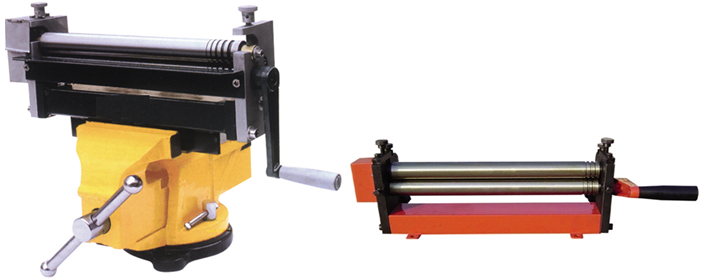Types of Plate Rolling Machine
Buying a plate rolling machine is a good idea for the small or medium sized business that needs to produce a large number of plates. There are many different types available, which means you can find one that will suit your needs. These types include asymmetrical, Upward-adjusting symmetrical, and Double pinch bending rolls.
What is Asymmetrical Type Plate Rolling Machine?
During the bending process of metal plates, three rollers are used to roll the plate. Three rollers are usually made of alloy steel, which is suitable for high-load operation. They are equipped with automatic up and down feeding devices. They can be used in a variety of working environments, and are easy to maintain.
Asymmetrical three rollers plate bending machine is a compact structure that can be easily operated. It can be used to bend different kinds of metal plates, such as curved, round, and conical ones.
The machine is equipped with a hydraulic system and a mechanical motor. This system provides a stable power source for the machine. It is suitable for various cylindrical barrels. The machine can also process arc shaped workpieces.
The upper roller is the main driving roll, and the bottom roller is the secondary drive. Both of them are made of high-quality alloy steel. The machine is also equipped with a balancing system, which is outfitted to the upper roller. This system keeps the upper roller balanced when tilted for taking out.
What is Upward-adjusting Symmetrical Type Plate Rolling Machine?
Compared to the symmetrical 3 roll plate rolling machine, the upward-adjusting symmetrical type has one advantage. Its symmetrical structure allows for the installation of profile dies. It also reduces the overall size and simplifies the operation.
The upward-adjusting symmetrical type plate rolling machine has the capacity to roll metal plates into arc workpieces. It is also suitable for rolling metal sheets into cylindrical, conical or tapered parts.
Unlike other plate rolling machines, the upward-adjusting symmetrical type is designed for the upper work roll. It has a hydraulic driven three-roller symmetric structure. It is relatively mature. In addition to its compact size, it also provides excellent performance.
There are many types of plate rolls available on the market. Some of the most popular are the horizontal lower roll move three roll plate rolls, the symmetrical 3 roll plate rolling machine, the arc downward adjustment 3-roll rolling machine, the symmetrical 3-roller plate rolling machine and the vertical lower roll move 3 roll plate rolls.
Double Pinch Bending Rolls Plate Rolling Machine
Among the types of plate rolling machines, double pinch bending rolls are the most useful. Not only do they allow you to form a tube from a plate, they also cut your bending time and material handling costs.
Depending on the type of material and the part being rolled, the correct plate roll size may be the difference between a successful bending process and a failed one. The best type of roll for the job is one that has optimal crowning, which is the slight diameter increase in the middle of the rolls.
The Three Roll Double Pinch plate roll is the most advanced three-roll double pinch machine on the market today. This machine has eliminated bushings, running tolerances and other problems associated with the conventional bending process. It also uses a hydraulic-powered pinch roll adjustment.
The Three Roll Double Pinch is the best solution for metal fabricators and job shops. It features hydraulic drop end, hydraulic tilting of the bending roll, adjustable rolling speed and outstanding performance.
Safety Features in Plate Rolling Machine
Several safety features are included in plate rolling machine. These safety devices include emergency-stop buttons and safety trip wires. In addition, most new machines are equipped with detachable operator control consoles.
The operator must be trained and certified to operate the machine. They should wear the necessary PPE to protect their skin. It is also important to wear protective headgear, gloves and workshop aprons.
The work area should be clean and free of any slipping hazards. The operator should also limit access to the site. In addition, a safety distance of two meters should be maintained between the operator and the equipment.
The operator should also pay attention to the personal protective equipment, including protective headgear, gloves, heat and spark resistance glasses. They should also be well lubricated. Loose jewellery and clothing may get caught in the rollers and cause an accident.
Before the machine is turned on, the operator should ensure that the workpiece is stable. They should also check that the machine is set in a safe position. The operator should also be familiar with the machine structure and performance.
The Bottom Line
Straight sheets are rolled into cylinder shapes using a plate rolling machine. Aluminium, copper, and zinc are bent for use in heating, conditioning systems, and ventilation systems, for metallurgy and roofing, and for industrialized mass manufacturing. They also bend stainless steel and regular steel.
- How Lathe Machine Manufacturers are Powering the Nation’s Engineering Growth in Canada?
- How Chamfer Machines Are Streamlining Metalwork in the UK’s Manufacturing Sector?
- How Feed Rate Adjustments Improve Surface Finish in Vertical CNC Milling Machines?
- How Radial Drilling Machines Achieve Low Vibration and Distortion Resistance?
- From Design to Execution: How CNC Press Brakes Ensure Seamless Workflow
- How to Optimize Sheet Metal Operations Using a Hydraulic Press Brake?



